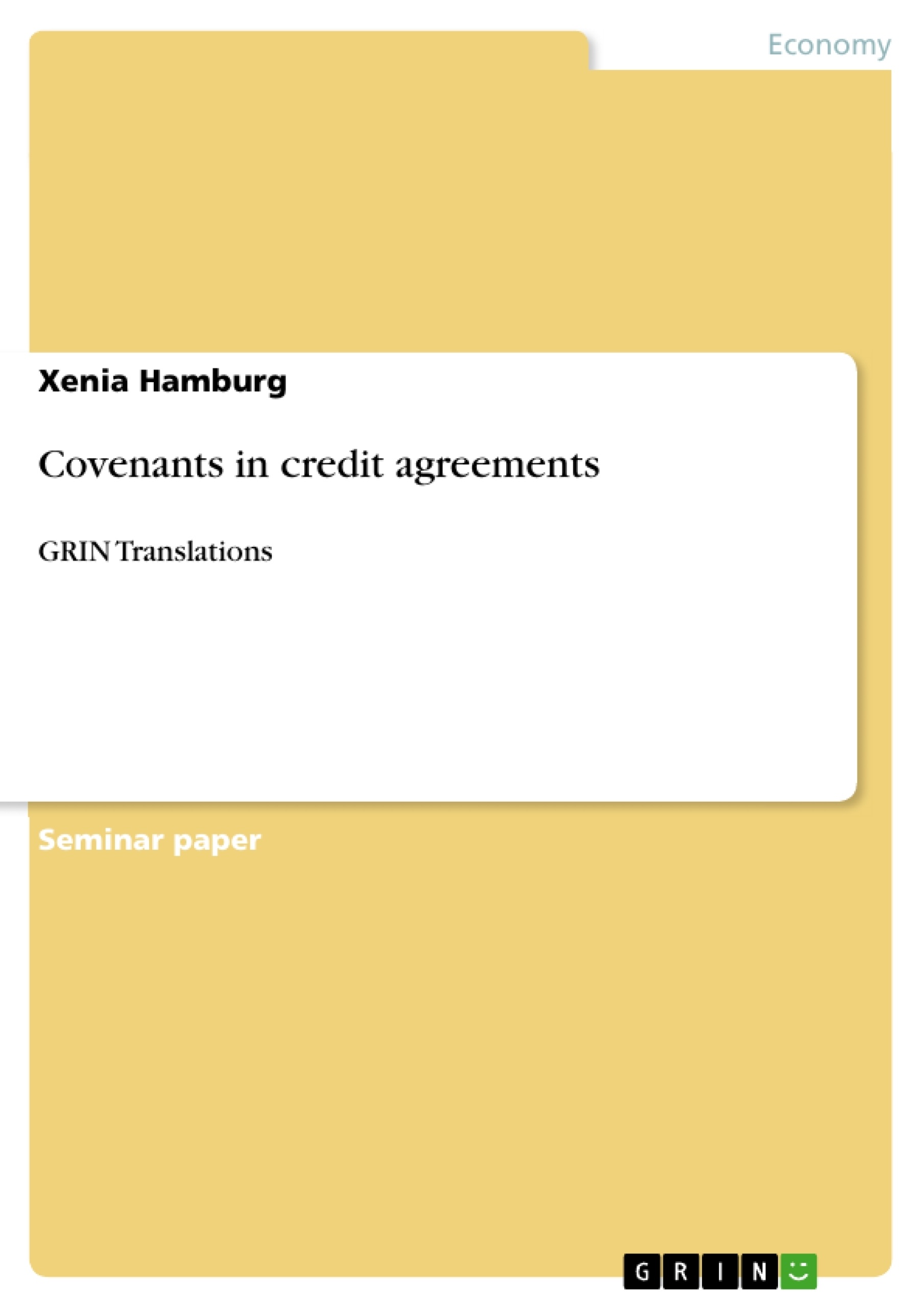This text was translated with the help of AI and reviewed by the GRIN editorial team.
Past and present economic crises are increasingly influencing the granting of loans by credit institutions. This paper deals with the question of what effect the "covenant" instrument has on the lending process, in what form it is used and what the consequences are if these contractual agreements are breached. It then establishes a link to practice and explains the relevance of covenants for regionally orientated credit institutions.
Today, covenants refer to contractual ancillary agreements in credit agreements that are agreed individually between lender and recipient and are intended to take both sides of interest into account. The aim of the lending bank is to minimize its credit default risk through regular controlling and early information about the developments of the company to be financed. In contrast, the borrower is interested in maintaining the freedom of decision and development in his company and in securing the economic conditions to such an extent that he is not confronted with the consequences of terminating a contract.
- Quote paper
- Xenia Hamburg (Author), 2012, Covenants in credit agreements, Munich, GRIN Verlag, https://www.hausarbeiten.de/document/1466174



